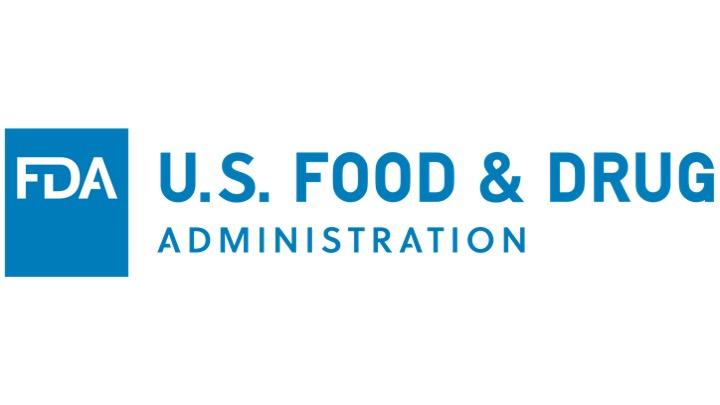FDA authorizes first next generation sequencing-based test to detect very low levels of remaining cancer cells in patients with acute lymphoblastic leukemia or multiple myeloma
SILVER SPRING, Md. /PRNewswire/ -- Today the U.S. Food and Drug Administration permitted marketing of ClonoSEQ assay, a next generation sequencing (NGS)-based test for minimal residual disease (MRD) in patients with acute lymphoblastic leukemia (ALL) or multiple myeloma. MRD is a measure of the amount of cancer cells remaining in a person's bone marrow.
"At the FDA, we're continuing to maximize opportunities for innovation that can improve patient outcomes," said FDA Commissioner Scott Gottlieb, M.D. "Today's approval is an important step forward for patients suffering from ALL and multiple myeloma. Determining whether a patient has residual cancer cells remaining after treatment provides information on how well a patient has responded to therapy and how long remission may last. Having a highly sensitive test available to measure minimal residual disease in ALL or multiple myeloma patients can help providers manage their patients' care. The FDA is applying novel regulatory approaches to make sure that these rapidly evolving NGS tests are accurate and reliable. At the same time, we're seeing more and more laboratory-developed tests seek marketing authorization from the FDA. We're doing as much as we can to advance these opportunities for patients under our current authorities. But we believe that to more fully unlock these innovations, we need to modernize the regulatory framework for all in vitro clinical tests. We put forward one such plan. We believe such an approach can promote the development of safe, effective technologies that have the greatest potential to help us diagnose, treat and cure disease."
B-Cell ALL is a rapidly progressing cancer that forms in the bone marrow and results in an increased number of abnormal white blood cells in the bloodstream and bone marrow. Multiple myeloma is a cancer that begins in plasma cells, a type of white blood cell. Malignant plasma cells accumulate in the bone marrow, crowding out the normal plasma cells that help fight infection. It is estimated that in 2018 approximately 6,000 people in the United States will be diagnosed with ALL and approximately 31,000 new cases of multiple myeloma will be diagnosed.
MRD is a general measure of the amount of cancer in the body (tumor burden), specifically the number of cancer cells that remain in a person's bone marrow, either during or after treatment. Measuring MRD provides a tool to detect very low levels of tumor burden. MRD is useful to evaluate in patients who have responded to therapy when their tumor burden is below what can be detected with standard methods. The detection of MRD is associated with recurrence of the disease in those patients. Currently, providers test for MRD using diagnostics called flow cytometry assays or polymerase chain reaction (PCR)-based assays. Those methods are usually capable of measuring MRD down to 1 in 10,000 or 1 in 100,000 cells.
The ClonoSEQ assay is an in vitro diagnostic that uses multiplex PCR and NGS to identify and quantify certain gene sequences in DNA extracted from bone marrow from patients with ALL or multiple myeloma. The ClonoSEQ assay measures the amount of MRD and is capable of detecting MRD at levels below 1 in 1 million cells. This is a single site assay collected by the patient's provider and sent to Adaptive Biotechnologies Corporation for evaluation.
The FDA evaluated data to demonstrate clinical validity from a retrospective analysis of samples obtained from three previously conducted clinical studies including 273 patients with ALL, an ongoing study of 323 patients with multiple myeloma, and a study of 706 patients with multiple myeloma. For patients with ALL, the ClonoSEQ assay was used to assess MRD at various disease burden thresholds to show that the MRD level correlated with event-free survival—the length of time, after treatment, that the patient remains free of certain complications or events. Patients whose ClonoSEQ assay result was MRD negative have longer event-free survival, while patients with higher MRD assay results had lower event-free survival rates. For patients with multiple myeloma, the ClonoSEQ assay demonstrated similar associations with progression-free survival—the length of time during and after the treatment of a disease that a patient lives with the disease but it does not get worse—and disease-free survival—the length of time after primary treatment for a cancer ends that the patient survives without any signs or symptoms of that cancer.
The FDA reviewed the ClonoSEQ assay through the de novo premarket review pathway, a regulatory pathway for novel, low-to-moderate-risk devices of a new type. Along with this authorization, the FDA is establishing criteria, called special controls, which clarify the agency's expectations in assuring the accuracy, reliability and effectiveness of tests intended to be used as an aid to measure MRD to assess the change in burden of disease during and after treatment. These special controls, when met along with general controls, provide a reasonable assurance of safety and effectiveness for these tests. This action also creates a new regulatory classification, which means that subsequent devices of the same type with the same intended use may go through the FDA's 510(k) process, whereby devices can obtain marketing authorization by demonstrating substantial equivalence to a predicate device.
The FDA granted marketing authorization of ClonoSEQ assay to Adaptive Biotechnologies.
More information:
FDA: CDRH Office of In Vitro Diagnostics and Radiological Health
Media Inquiries: Stephanie Caccomo, 301-348-1956, stephanie.caccomo@fda.hhs.gov
Consumer Inquiries: 888-INFO-FDA
SOURCE U.S. Food and Drug Administration


